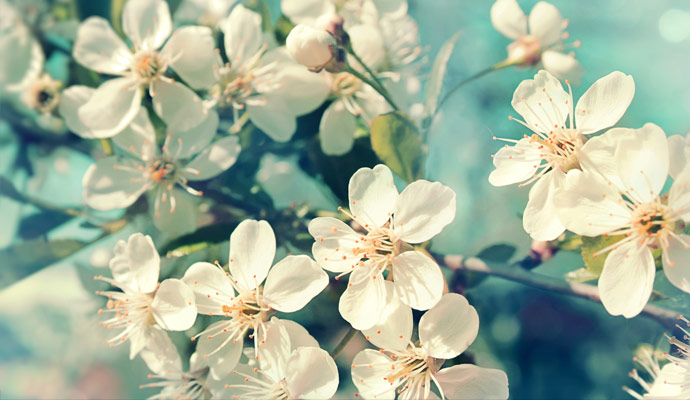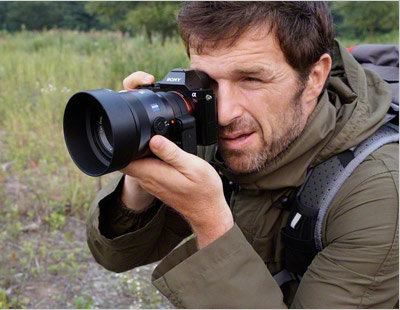
It’s hard to believe we’re already past the worst of winter and are looking forward to longer days, better weather and the blooming of new life that comes with spring. Happy days ahead. There is no better time of year to grab your camera and get out into the open air and hone those photography skills. If you got a new camera for Christmas that’s been gathering dust on the shelf, now is the time to put it to good use.
Today I’m going to give you some inspiration to help on your way; some suggestions about subjects you may wish to pursue, techniques you may wish to employ, plus a few words about choosing your equipment.
If you already have a camera that you’re happy with, skip this part, but if you’re thinking about making an investment, here’s my 2 cents. The quality of your images relies primarily on two things: the sensor and the lens so buy the camera with the biggest sensor you can afford. The bigger the sensor the better, and the higher the quality of the lens the better. Ideally, you’ll want to use a camera with a full frame sensor, like the Canon 6D or the Sony A7. But if that’s outside your budget, look for a camera with an APS-C sized sensor. There’s also the Micro-Four Thirds sensor used by Olympus and Panasonic which will also yield great results. After that you’re looking at point-and-shoots which have really small sensors which don’t produce great results. The caveat I always like to mention when discussing equipment however, is that the talent of the photographer is way more important than the equipment when it comes to making great images.
Find Your Inspiration
Once you’ve got your equipment locked down and you’re ready to go out and shoot, stop for a minute and ask yourself; ‘What am I going to shoot today?’. I think a lot of people just grab their stuff and head out without having any idea what it is their hoping to come back with. And if have no direction, it’s hard to reach your destination. Street photography is kind of a different kettle of fish though, because this is an area in which we hope to be inspired by what we see on the streets. If you are planning to try your hand at street photography, it’s important to know the neighbourhoods that are likely to play host to interesting street scenes. If you’ve ever watched a street photographer work (and I strongly recommend the movie ‘Everybody Street’) you’ll see that they’re very focussed in how they approach their work, because experience has taught them what works and what doesn’t.
Seek The Moment
One of the key pieces of advice I can give regarding street photography is to keep your eye to the camera. Moments happen in an instant and if you’re not ready and poised with your finger on the shutter button, then you’ll miss it. Henri-Cartier Bresson built one of the most highly respected bodies of work in photography capturing amazing street scenes all over the world. One of his techniques was to find an interesting location and wait to see what unfolded. So many of his most memorable images were unknowingly made unique by the people who happened to wander by.
Fly Solo
One mistake that I sometimes notice is hobby photographers working in pairs or small groups. For me this is a total no-no. I believe very strongly that photography (the actual action of making images) is a solitary pursuit that relies on the total focus of the photographer in order to make strong work. The company of others is for me a distraction that serves no useful purpose. Fly solo while you photograph, and when you have work that you’re ready to share, then seek out some like-minded peers to get feedback from.
 Nature And Landscape
Nature And Landscape
One of the most popular fields of pursuit in photography is nature and landscape work. Here in Canada we’re blessed with some of the most breathtaking outdoor locations that exist anywhere in the world. Most Canadians live just minutes from scenes of gloriously unspoiled nature, scenes that are eminently photographable. The thing about nature photography is that it’s very much dependant on the conditions that happen to be prevalent in the moment you happen to be at the scene. It takes experience to learn how to read weather conditions and to know when is a good time to photograph nature. For example, the most dramatic light is often provided by a low sun, and a cloudy sky will convey much more mood than a clear blue sky. It’s often the case that what we conventionally think of as a nice day is not such a great day for photography, and vice versa. Never take anything for granted; if you have some spare time, just get out there and practice.
Photographing People
Personally, I’m drawn to portraiture, the photography of people. For me people are the most interesting subjects in the world, and as with nature photography it takes experience to learn how to photograph people effectively. There’s obviously the technical side of things, for example choosing the right aperture and focal length, finding (or creating) flattering lighting conditions, but there’s also the so-called ’soft skills’ that help you to put your subjects at ease. One of my main concerns when I create a portrait is that it should feel authentic and natural. I’m not someone who agrees with the notion that we can learn a great deal about a person from a photograph, but I believe if we can capture our subjects feeling relaxed or in the moment, that’s the best we can hope for.
Keeping Pushing
Photography is about constantly learning new things. Experiment with new techniques, push yourself to try new things and you’ll keep making discoveries. Above all I think it’s really important to actually print your work, hang it on your walls and live with it, in order to get a feel for what’s working and what you need to focus on to push your photography forward.




